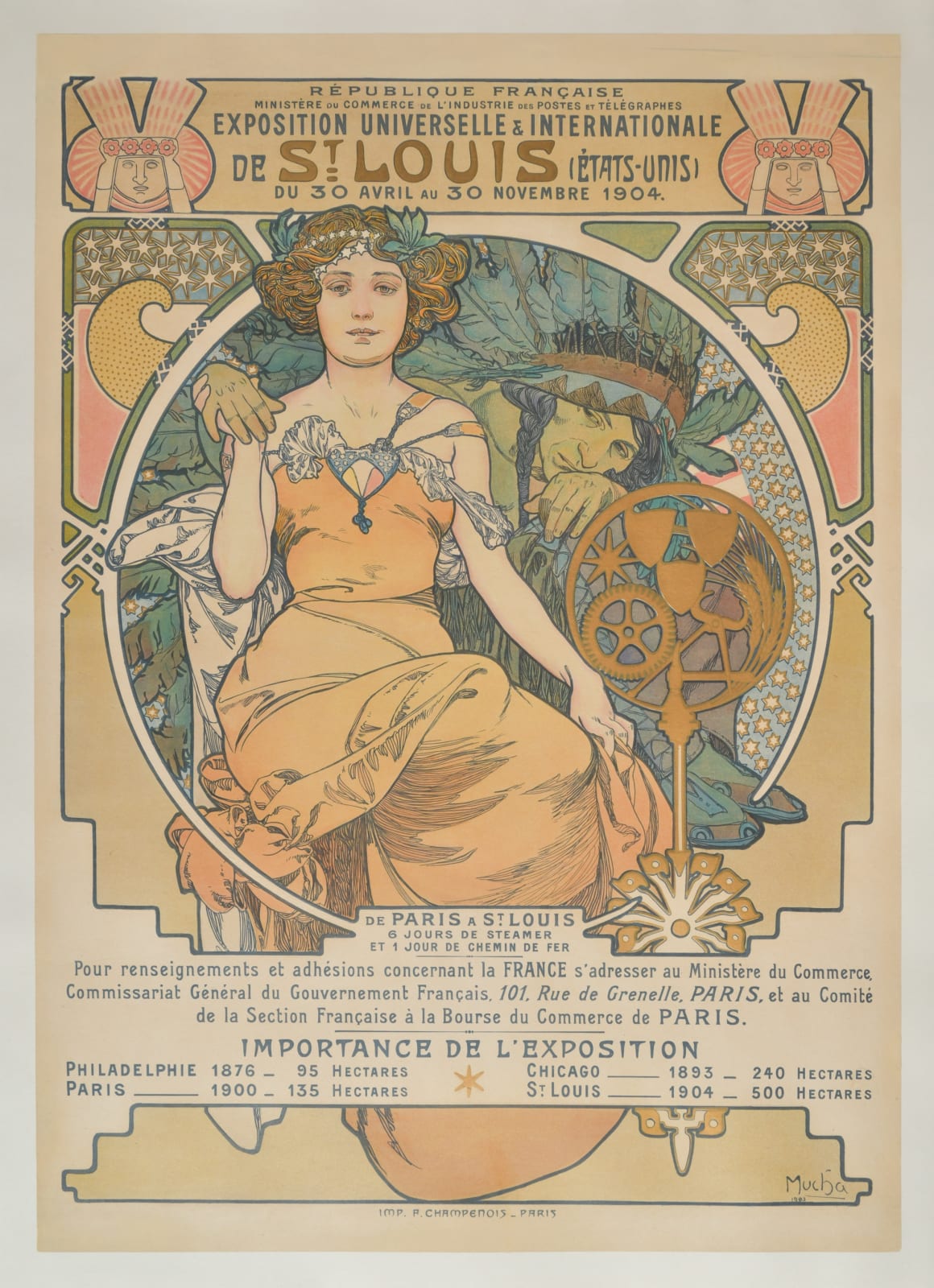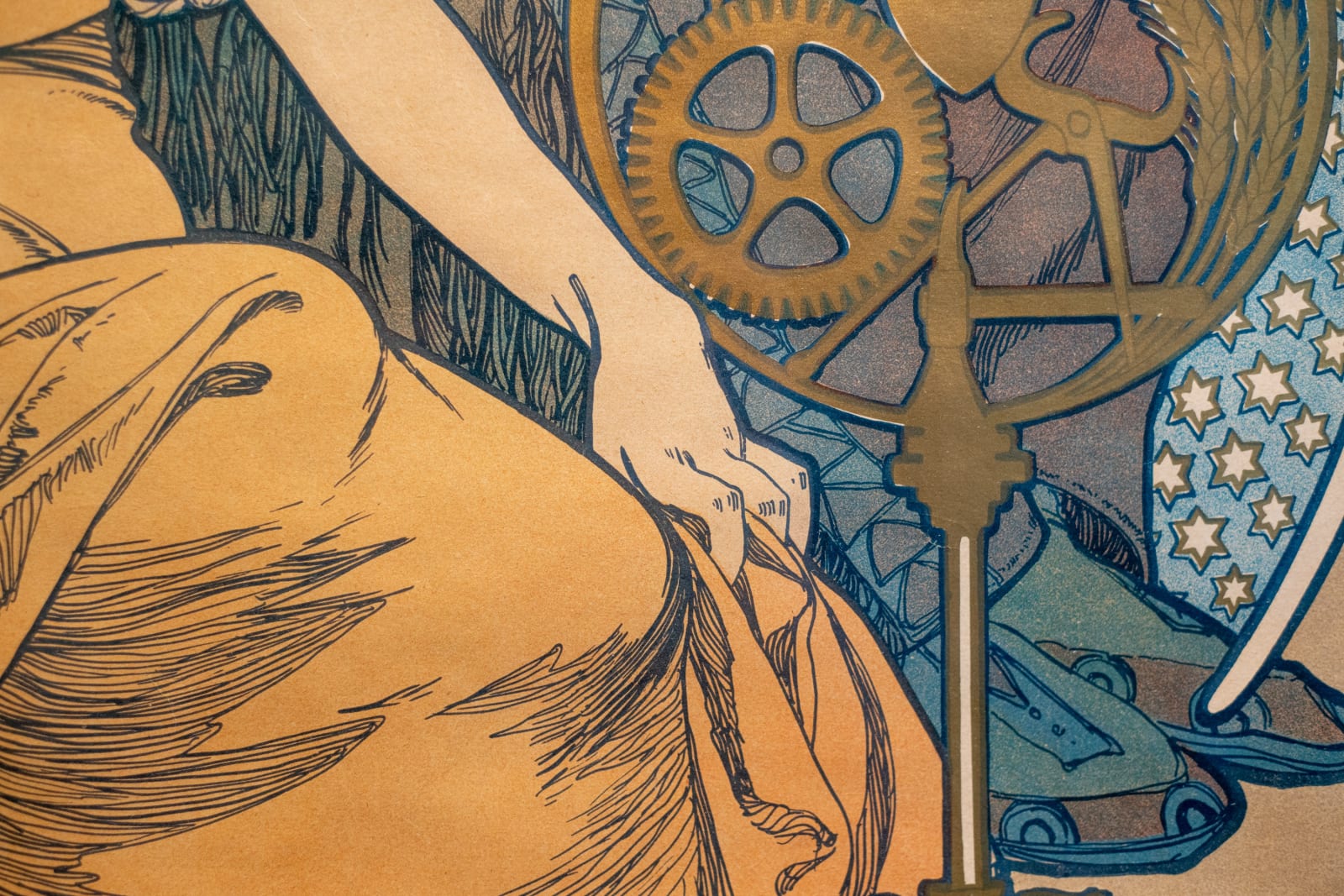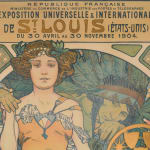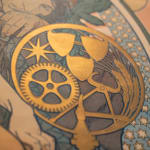Alphonse Mucha Czech, 1860-1939
1896
Further images
“The Mucha maiden holding hands with the Indian chief advertises the 1904 World’s Fair at St. Louis, Missouri, and invites the French traveler to take a journey involving six days by steamer and one day by train... The theme of the fair was science and industry, as shown in the circle at right. The star in it represents the rather unusual first day of the Fair, which demonstrated the sensitivity and scientific value of a rather new discovery of the time, the photocell. A photocell at the bottom of a long tube was aimed at a spot in the heavens where a bright star—Arcturus—would appear at the exact opening hour of the Fair. As the star’s light reached the photocell at the precise moment, it activated a switch which lit all the lights in the fair grounds” (Rennert/Weill, p. 310).
Alphonse Mucha was a painter and decorative artist best known for the sensual Art Nouveau paintings, posters, and advertisements that came to define Art Nouveau in fin de siècle Paris. In 1887, after periods of employment in Vienna and Moravia, and studies in Munich and Paris, Mucha began to support himself producing magazine and advertising illustrations. Eventually he gained fame by creating a poster for a play featuring Sarah Bernhardt, in the role of Gismonda. It was the first of many of his depictions of voluptuous women seductively posed and draped in sheer, clinging gowns. They are generally set off by sinuous hair, turgid vines, and bountiful flowers, all distinctly outlined in the manner of Japanese woodcuts. The coiled eroticism of Mucha’s compositions created a lush and sensuous beauty that was admired and imitated by both collectors and artists alike.









